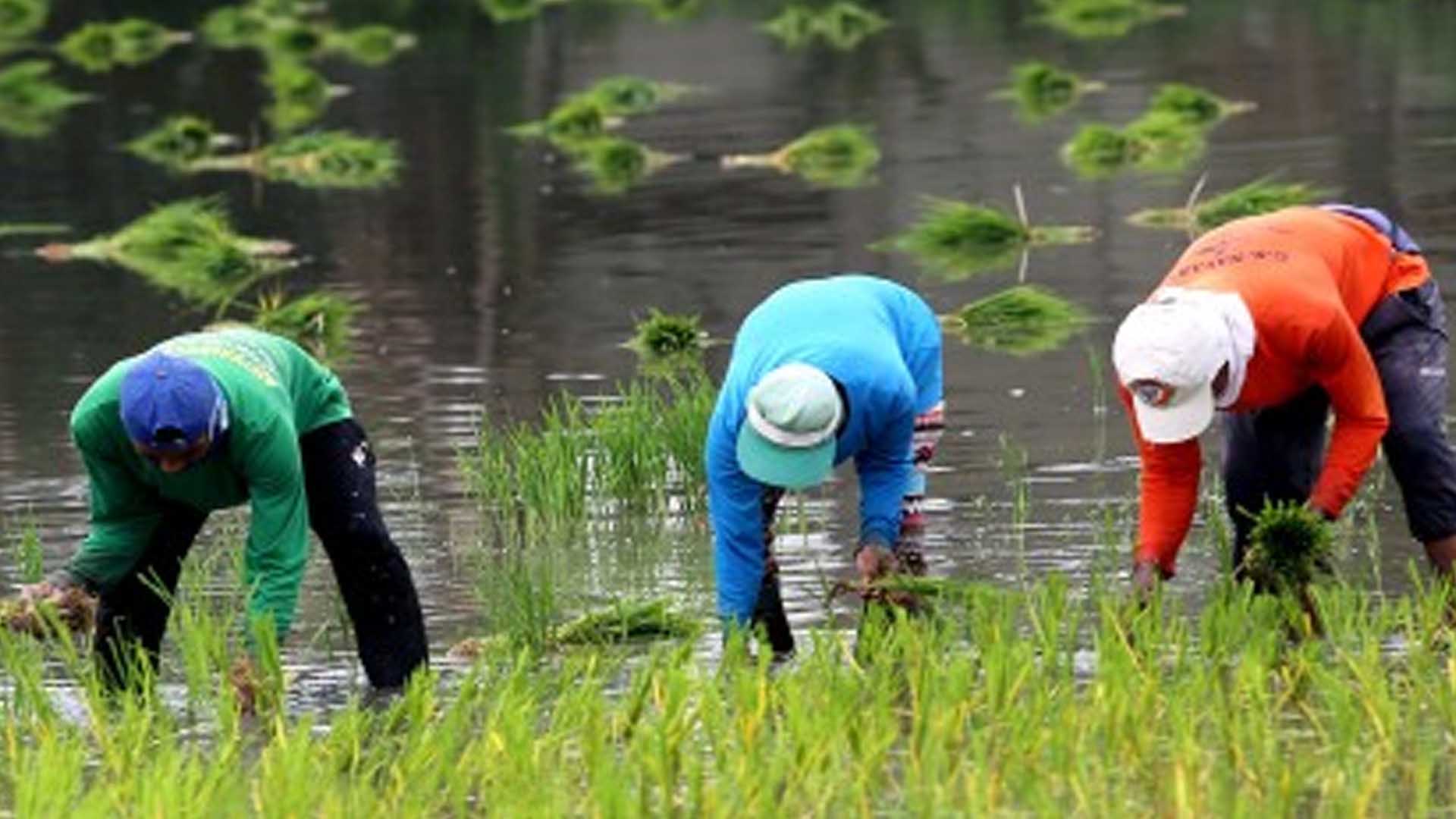The National Irrigation Administration (NIA) has underscored the need to boost cropping intensity to fill the gap in local palay production.
This came after President Ferdinand R. Marcos Jr. cited the 3 million tons gap between the country’s local production equivalent to 13 million tons of rice and the 16 million tons local demand, despite last year’s record-high harvest since 1987.
“Ang gagawin lang namin sa NIA niyan ilalagay namin iyong dalawang cropping sa dry season which is October hanggang (The NIA will secure two cropping during the dry season which is October until) February,” NIA Administrator Eduardo Guillen said during the post-State of the Nation Address (SONA) forum on Tuesday.
“February magtatayo kami ulit July hanggang mayroon tayong dry season para at least mayroon tayong almost three, para ma-increase natin iyong ating production (We will start again by February and July while we have a dry season to at least have almost three [cropping], to increase our production),” he said, adding the increased intensity will help boost yield.
Three cropping calendars in a year is possible with the establishment of large irrigation projects.
Last July 19, President Marcos led the inauguration of the PHP940 million Sulvec Small Reservoir Irrigation Project (SRIP) in Barangay Sapat, Pasuquin, Ilocos Norte that is expected to benefit more than a thousand farmers.
On July 16, Marcos led the inauguration of the PHP19.7-billion Jalaur River Multipurpose Project-Stage II (JRMP-II) at Calinog, Iloilo that is expected to expand NIA’s service area by 9,500 hectares and benefit around 25,000 farmers with uninterrupted irrigation water supply.
On June 10, the President inaugurated the PHP65.77-million Cabaruan Solar-Powered Pump Irrigation Project (SPIP) in Quirino town, Isabela, the biggest solar-powered pump irrigation system in the country. It is expected to irrigate 350 hectares of rice field, benefitting almost 237 palay farmers.
A total of 15 mass solar-powered pump irrigation projects and two small solar-powered irrigation projects have also been distributed by NIA in the Cagayan Valley Region.
In total, the Marcos administration has already finished 82 solar-powered pump irrigation projects across the country since 2023.
The NIA is also hoping to start construction of the PHP20.7-billion Panay River Basin Integrated Development Project (PRBIDP) in Capiz in 2026.
Once completed, it is expected to create 13,950 hectares of potential new irrigable areas that will benefit more than 25,000 farmers.
Guillen said the country may meet the current gap and achieve self-sufficiency by also boosting farm productivity through the timely distribution agriculture inputs, like hybrid seeds and fertilizers to farmers.
“Kung ma-increase mo lang six tons per hectare, eh food secure na po tayo eh, hindi na tayo mag-i-import ng rice (If you increase it by six tons per hectare, we will be food secured, we will no longer import rice),” he said, noting the current 4.2 tons yield per hectare.
The NIA administrator, meanwhile, expressed hopes to further increase its budget as the Department of Budget and Management (DBM) mentioned a PHP42 billion budget for irrigation in 2025.
Guillen earlier said the NIA’s ideal annual budget is PHP200 billion, which will help utilize the country’s 1.2 million hectares of unirrigated lands.
Land title distribution
For its part, the Department of Agrarian Reform (DAR) said the distribution of “parcelized” land titles has helped the Marcos administration advance its food security targets.
“Nagkaroon ng confusion kaya hindi malaman kung sino iyong talagang may-ari o kaya kung saan siya magtatanim (there has been a confusion that’s why we can’t identify who’s the owner or where they can plant),” DAR Secretary Conrado Estrella said referring to the implementation of the Collective Certificate of Land Ownership Award before the Marcos administration.
“Kaya ang ginagawa namin ngayon, nagpa-parcelize kami para nang sa ganoon, iyong (That’s why for now, we are parcelizing so that the ownership will be) well-determined,” he added.
As of July 12, the DAR has already distributed a total of 137,000 land titles to more than 140,000 agrarian reform beneficiaries (ARBs) nationwide.
Estrella has said this is a significant increase from 17,640 land titles distributed from March 2021 to June 2022.
From July to December 2022 alone, around 21,876 titles were awarded.
For 2023, Estrella said DAR exceeded the Congress-instructed target of 50,000 land titles, hitting as high as 69,899 land titles awarded nationwide.
For 2024, he said the department aims to distribute 100,000 land titles.
Space technology
The Department of Agriculture (DA), meanwhile, bared plans with the Philippines Space Agency (PhilSA) to utilize space technology to boost local production.
In an ambush interview, DA Secretary Francisco Tiu Laurel Jr. said the coordination aims to provide accurate data on wind speed and wind direction, which are “very important” for proper timing of cropping.
“So, para ma-timing kasi sa pag-plant ng seeds, may time yan, tamang time. Sa tamang hangin sa pollination (So we can have a good timing in planting seeds, there’s a time, a proper time. Proper wind for pollination),” he said.
“With this technology, satellite, we’re hopeful that (it) can be used to increase production,” he added.
Laurel said the space technology project is currently undergoing a bidding process. (PNA)


















